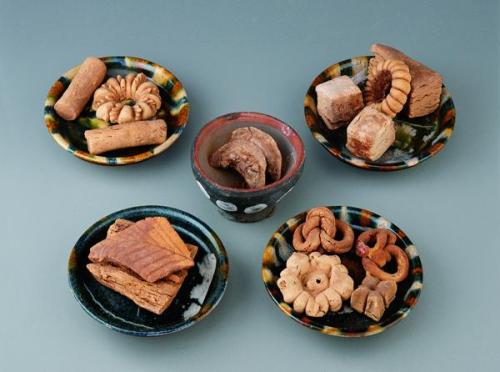mingsonjia: pictures: Dumplings and delicacies unearthed from a Tang Dynasty tomb in
mingsonjia: pictures: Dumplings and delicacies unearthed from a Tang Dynasty tomb in Turpan, Xinjiang Province in 1972. Now exhibited in the Ancient China section in the National Museum. The origin of dumplings (Jiaozi) According to historical records and unearthed relics, dumplings became the popular food in as early as the late Han Dynasty. But back then, its name was Huntun馄饨, and people steam-fried it like they now do with steam-fried dumplings. Yan Zhitui in Northern Qi said, “Today’s Huntun has a moon-like form and is eaten by all the people.”形如偃月,天下通食. This moon-shaped Huntun is actually today’s dumpling. It also has another name: Jiaoer娇耳. Just as quoted in “Zheng Zi Tong”《正字通》, “Today’s Huntun is another name for Jiaoer. Its wrapper is generally made from rice or flour, and the center is filled with stuffing. It looks like small balls and the size can be quite different. People steam-fry it.” Ming Dynasty book “Wan Li Ye Huo Bian”《万历野获编》 cited some interesting couplets said by Beijingers then: “The thin-wrapper Baocui and the thick-stuffing Huntun, the leaves Jiaoer and the flowers Shaomai”. It’s clearly seen that people had drawn distinctions among Huntun, Jiaozi and Shaomai at that time. The dumplings unearthed in Turpan is in the same shape as today’s dumplings, which proves that over 1,000 years ago, dumplings became not only a well-known food in the Central Plains in China, but also a favorite food of people in the Western Regions through the journey on the Silk Road. <( ̄ˇ ̄)/ {Don’t forget to eat some Jiaozi on the Winter Solstice} -- source link
Tumblr Blog : mingsonjia-deactivated20170120.tumblr.com
#dumplings#history

